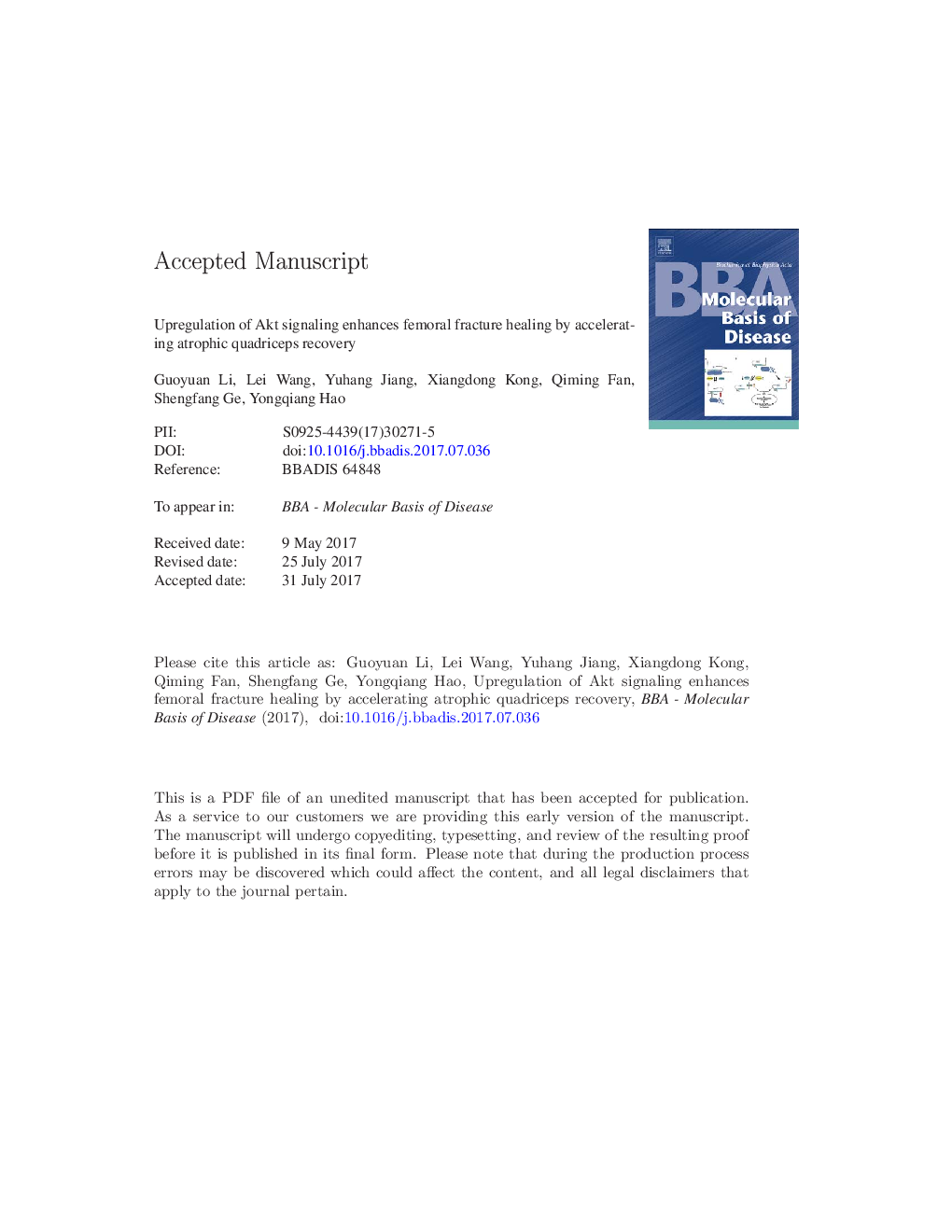| Article ID | Journal | Published Year | Pages | File Type |
|---|---|---|---|---|
| 8258879 | Biochimica et Biophysica Acta (BBA) - Molecular Basis of Disease | 2017 | 39 Pages |
Abstract
Muscle damage and disuse muscular atrophy are detrimental for fracture healing. It has been reported that the Akt signaling pathway plays a role in skeletal muscle hypertrophy and atrophy. The aim of this study was to further investigate whether promoting local muscle function through regulating Akt signaling affects fracture healing. For this purpose, we combined a rat model of short-term atrophy of the quadriceps with a femoral fracture model. In brief, botulinum toxin-A (BTX) were administered locally into the quadriceps one week before femur osteotomy to induce muscle atrophy. For the following weeks after BTX treatment, animals received injection of the Akt activator SC79 (20Â mg/kg/week) or the Akt inhibitor MK2206 (100Â mg/kg/week). We found that SC79 significantly accelerated the recovery of quadriceps weight and fiber size after BTX treatment. Moreover, animals that received SC79 injection showed greater bone callus volumes and superior femur mechanical properties. Immunological analysis revealed that the expression levels of the muscle-specific marker myosin heavy chain (MHC) were increased while expression of a negative regulator of muscle mass and function, myostatin, was decreased after SC79 treatment. Furthermore, SC79 increased the mRNA levels of the myogenic regulatory factors MyoD, MRF4 and Myf5 and promoted myotube formation in vitro. Taken together, these findings reveal that SC79 could accelerate the recovery of reversible muscular atrophy induced by BTX and subsequently promote fracture healing through activation of the Akt signaling pathway, which suggests its therapeutic potential in orthopedics.
Keywords
TGF-βTb.ThBTXTb.NBotulinum Toxin-AmTORTb.SpBMDBMSCIGF-1p70S6KMuscle atrophyAktFracture healingtransforming growth factor-βBone mineral densitytrabecular separationMyosin heavy chainbone marrow stromal cellstrabecular numbertrabecular thicknessinsulin-like growth factor 1MHCAnimal modelsmammalian target of rapamycinGrowth hormoneribosomal protein S6 kinaseprotein kinase B
Related Topics
Life Sciences
Biochemistry, Genetics and Molecular Biology
Ageing
Authors
Guoyuan Li, Lei Wang, Yuhang Jiang, Xiangdong Kong, Qiming Fan, Shengfang Ge, Yongqiang Hao,
